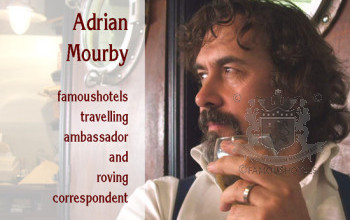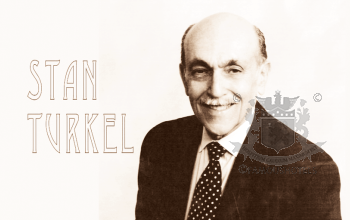John McEntee Bowman
( words)
John McEntee Bowman (1875 – October 28, 1931) was a Canadian-born businessman, American hotelier and horseman, and the founding president of Bowman-Biltmore Hotels Corp.
John McEntee Bowman had no easy boyhood. Born in 1875 in Toronto to Irish-Scottish immigrants, Bowman came to New York in 1892 when he was seventeen years old with the traditional lack of funds. He carried a letter of introduction to the manager of the old Manhattan Hotel at Madison Avenue and Forty-second Street. After waiting hours for an interview, he left without seeing the manager. He subsequently mailed the letter, asking for an appointment but received no reply and no returned letter. He got his first experience in the hotel business when an employment agency sent him as a front desk clerk to a summer hotel in the Adirondacks and the following winter to a hotel in the south. He later landed a job as riding- master at the Durland Riding Academy in Manhattan, a skill he learned in Canada working for a stable of race-horses on the county fair circuit. When Durland’s passed a rule that the riding masters had to wear uniforms, Bowman rebelled, resigned and set up his own small riding academy with a few horses until he left it to take charge of wines and cigars in the old Holland House on Fifth Avenue then operated by owner Gustave Baumann. Baumann served as his teacher and mentor and ultimately appointed him as his assistant and secretary. When Baumann opened the New York Biltmore Hotel on New Year’s Eve in 1913, he appointed Bowman as vice president and managing director. In the summer of 1914, when Baumann in a fit of depression leaped from an upper-story window of the Biltmore, Bowman succeeded to the presidency. The Biltmore was designed by Warren & Wetmore in the popular Beaux-Arts style and opened near Grand Central Station with twenty-seven floors and one thousand guestrooms.
At the turn of the twentieth century, railroads provided the genesis for the development of hotels. No invention up until then transformed modern life like the railroad which fostered development of new hotels near city railroad terminals. The ultimate development was the Grand Central Terminal in New York City, the Beaux-Arts centerpiece of an extraordinary complex of hotels, office buildings and apartment buildings. Railroad engineer William Wilgus conceived a way “to make the land pay more.” Prior to the construction of Grand Central, land was viewed as having value on and below the surface including rights to mineral resources. But Wilgus realized that the space over the tracks was valuable as well and invented the concept of “commercial air rights”. To pay for the enormous costs of excavating this area, Wilgus proposed selling the rights to real estate developers who were eager to build skyscrapers over the tracks. Throughout the 1910s and 1920s Wilgus’s concept of air rights was realized. The Commodore, Biltmore, Park Lane, Roosevelt and Waldorf-Astoria were all developed in keeping with Wilgus’s brilliant innovation.
The Hotel Monthly (“The Biltmore, New York’s Newest Hotel Creation,” January 1914) praised the operating benefits of the Biltmore’s regular, square-shaped plan, including symmetrical layout of corridors with very few turns, easing the circulation of guests. The U-shaped light well of the guestroom floors allowed better light and ventilation, creating a large number of desirable rooms. The interior design located the public spaces in a logical and well-established division with the lower-level public rooms and upper-floor ballroom.
When Prohibition removed the economic cushion of liquor profits, John Bowman and the Warren & Wetmore firm applied a more rigorous cost analysis for the new Commodore Hotel in New York (1918-1919). They intended that the Commodore, built over Grand Central Station, would have two thousand rooms at lesser rates than the Biltmore. John Bowman wrote in Hotel Management (April 1923):
“This large number of people includes many who are not used to complete personal service such as the attendance of a valet, and who do not like to be waited upon too much. So the degree of our service which corresponded with the reduced cost as compared with the Biltmore, also corresponded with fair exactness to the desires and business demands of the guests. This great volume as compared with the overhead makes it possible to give say roughly eighty percent of the Biltmore service at sixty percent of the prices.”
Hotel World magazine apparently agreed with Bowman. In an article titled “Hotel Commodore, New York City Now Heads Bowman Chain of Caravansaries” (February 1919), they wrote,
“No other hotel in the world offers so much at any price. In the construction of the building the thought has been kept constantly in mind to produce a great hotel that could be operated at very low cost… This the architects have been able to accomplish.”
By 1919, Bowman had bought and sold two major New York hotels, had acquired the Hotel Ansonia and had taken over the operation of the Murray Hill Hotel and the Belmont Hotel. By the time he opened the Hotel Commodore, his New York properties totaled nearly eight thousand guestrooms and, according to a headline in the New York Times (May 6, 1918), “encircled” Grand Central Terminal. Meanwhile, Bowman was expanding his Biltmore hotel empire across the United States and into Cuba.
“The Biltmore Hotel” was the name adopted by Bowman for his chain of hotels. The name evokes the Vanderbilt family’s Biltmore estate whose buildings and gardens are privately-owned historical landmarks in Asheville, North Carolina.

● Los Angeles Biltmore Hotel - in the early 1920s, Southern California had a great surge in population, business creation and real estate development. Bowman commissioned Schultze and Weaver to design the Los Angeles Biltmore. The 11-story 1,112 room hotel opened in 1923 and became known as the “host of the coast”. Composed of three huge towers, the Biltmore quickly became a Los Angeles icon with its grand ballroom seating 650. In May 1927, the hotel hosted the founding banquet for the Academy of Motion Picture Arts and Sciences. The Oscar statue was reportedly sketched on a napkin in the hotel’s Crystal Ballroom. The main lobby is three stories high with deep barrel vaulting, a gilded, coffered ceiling and features a dramatic staircase derived from an early sixteenth- century staircase in the Spanish Burgos Cathedral. The hotel has served as the backdrop setting for more than 50 major motion pictures including Ghostbusters, The Nutty Professor, Independence Day, True Lies, Dave and Beverly Hills Cop.
● Sevilla- Biltmore Hotel, Havana, Cuba- During the 1920s, Havana was a favorite winter vacation destination for well-to-do Americans. In 1919, John Bowman and Charles Francis Flynn bought the four-story Sevilla Hotel which was built in 1908 by the architects Arellano y Mendoza. On January 28, 1923, the New York Times reported that Bowman would build a ten-story addition with Schultze and Weaver designs. Set at a right angle to the original Sevilla, the new building added two hundred guestrooms and bathrooms, the 300-seat Roof Garden restaurant with spectacular views of the Presidential Palace, the Capitol Building and Morro Castle. The expanded Sevilla Biltmore Hotel opened on January 30, 1924. Bowman and Flynn timed their expansion just right. The Sevilla-Biltmore opened the year before Prohibition was imposed in the United States.
The hotel was featured in Graham Greene’s novel, Our Man In Havana.
● Atlanta Biltmore Hotel, Atlanta, Georgia- John McEntee Bowman and Holland Ball Judkins partnered with Coca-Cola heir William Candler to develop the $6 million Atlanta Biltmore in 1924 with eleven floors, 600 guestrooms, extensive convention facilities and an adjacent ten-story apartment building. The Atlanta Biltmore was designed by Bowman’s favorite architectural firm of Schultze and Weaver.
The Atlanta Biltmore was built close to the downtown area but separated from the business district. The hotel opened with great fanfare with a chartered train from New York City to bring wealthy and famous guests to Atlanta for the grand opening. The opening festivities were broadcast nationally over the radio.
The Atlanta Biltmore, once known as the South’s supreme hotel, staged galas, tea dances, debutante balls, and recitals by visiting Metropolitan Opera stars. It served celebrities such as Franklin D. Roosevelt, Dwight D. Eisenhower, Mary Pickford, Bette Davis, and Charles Lindbergh. For more than 30 years, WSB, the South’s first radio station, broadcasted from its studios within the hotel and the radio tower on the hotel roof which became a landmark on the city skyline. Facing increased competition from Atlanta’s modern downtown hotels, it was sold to a series of owners beginning in the 1960s and closed its doors in 1982. In Spring 1999 after extensive renovations, the former Biltmore Hotel reopened for the first time in almost 20 years and won an Honorable Mention in the Best Mixed-Use Deal of the Year category in the Atlanta Business Chronicle.
● The Westchester Biltmore Country Club, Rye, N.Y.- In May 1922, Bowman opened the luxurious Westchester- Biltmore Country Club in Rye, New York. In the summer of 1919, an eight-story building was built from designs by the New York architects Warren & Wetmore. In it Bowman combined what were to become signature elements of all his great hotels; a total environment that would include amenities well beyond that of an ordinary country club. Members and guests were able to participate in golf, tennis, squash, trap shooting, and swimming at a private bathing beach on Long Island Sound. Bowman, who was a fan of amateur horse racing, built a polo field designed for horse shows and other equestrian entertainment. The two 18-hole golf courses were designed by Walter J. Travis, the great British golf champion-turned-golf course architect. On May 15, 1922, John McEntee Bowman formally opened the Westchester County Club with almost 1,500 members.
● The Arizona Biltmore Hotel, Phoenix, Arizona- Warren McArthur Jr., his brother Charles and John McEntee Bowman opened the Arizona Biltmore on February 23, 1929. The Biltmore’s architect of record is Albert Chase McArthur but it is often referred to as a Frank Lloyd Wright design. This attribution is refuted by Wright himself who wrote in the Architectural Record:
“All I have done in connection with the building of the Arizona Biltmore near Phoenix, I have done for Albert McArthur himself at his sole request, and for none other. Albert McArthur is the architect of that building- all attempts to take the credit for that performance from him are gratuitous and beside the point. But for him, Phoenix would have had nothing like the Biltmore, and it is my hope that he may be enabled to give Phoenix many more beautiful buildings as I believe him entirely capable of doing.”
Mc Arthur did utilize one of Wright’s signature design elements: the Textile Block system. In 1930, the McArthurs lost control of the resort to one of their primary investors, William Wrigley, Jr. Ten years later, the Wrigley family sold the hotel to the Talley family. In 1973, after a large fire destroyed most of the property, it was promptly rebuilt better than ever. After a series of ownership changes, CNL Hotels and Resorts acquired it in 2004 and gave the management contract to KSL Recreation, Inc. In 2013, the Arizona Biltmore was sold to the Government of Singapore Investment Corporation. Hilton operates it as a member of the Waldorf=Astoria Collection.
● The Hotel DuPont, Wilmington, Delaware- At its opening in 1913, the Hotel DuPont was designed to rival the finest hotels of Europe. The new hotel contained 150 guestrooms, a main dining room, rathskeller, men’s café/bar, ballroom, club room, ladies’ sitting room and more.
During the first week alone, after its gala opening, 25,000 visitors toured the new hotel, where no expense was spared. In the ornate public spaces, nearly two dozen French and Italian craftsmen carved, gilded and painted for over two and a half years. Polished brass beds were made up with imported linen, while sterling silver comb, brush and mirror sets were placed on the dressing tables. In the main Dining Room, now known as the Green Room, fumed oak paneling soared two and a half stories from the mosaic and terrazzo floors below. Six handcrafted chandeliers and a musicians’ gallery overlooked the opulence. After dinner, many guests enjoyed professional performances at the Hotel’s own Playhouse Theatre, now known as the DuPont Theatre. Built in only 150 days in late 1913, its stage is larger than all but three of the New York City’s theatres.
During its early days, the hotel showed its commitment to struggling local artists by displaying their works. Today, they highlight one of the foremost collections of Brandywine art, including three generations of original Wyeth masterpieces.
In the 1920s the hotel was managed by the Bowman-Biltmore Hotel Company and named the DuPont-Biltmore Hotel. Through the years, the hotel has been host to presidents, politicians, Kings, Queens, sports figures, corporate giants and celebrities.
Excerpted from “Great American Hoteliers: Pioneers of the Hotel Industry”, AuthorHouse 2009
My Newest Book
“Built To Last: 100+ Year-Old Hotels West of the Mississippi” is available in hardback, paperback and ebook format.
Ian Schrager writes in the Foreword:
“This particular book completes the trilogy of 182 hotel histories of classic properties of 50 rooms or more… I sincerely feel that every hotel school should own sets of these books and make them required reading for their students and employees.”
This trilogy consists of the following three books:
Built To Last: 100+ Year-Old Hotels in New York Built To Last: 100+ Year-Old Hotels East of the Mississippi Built To Last: 100+ Year-Old Hotels West of the Mississippi All of these books can be ordered from AuthorHouse by visiting [url=http://www.stanleyturkel.com]http://www.stanleyturkel.com[/url] and clicking on the book’s title.
My Published Books
Great American Hoteliers: Pioneers of the Hotel Industry (2009) Built To Last: 100+ Year-Old Hotels in New York (2011) Built To Last: 100+ Year-Old Hotels East of the Mississippi (2013) Hotel Mavens: Lucius M. Boomer, George C. Boldt and Oscar of the Waldorf (2014) Great American Hoteliers Volume 2: Pioneers of the Hotel Industry (2016) Built To Last: 100+ Year-Old Hotels West of the Mississippi (2017)











